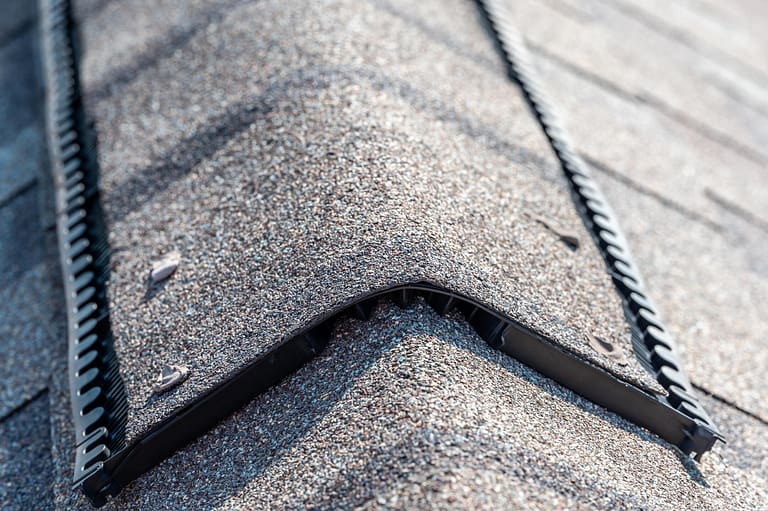
Property management involves significant investments, and the roof over your head is one of the most important. When choosing the right roofing material for commercial properties, metal roofing stands out as a reliable and durable option. This comprehensive guide will walk you through everything you need to know about commercial metal roofing, from its benefits and types to essential factors to consider. Whether you’re managing a new construction project or looking to replace an existing roof, this blog post will provide valuable insights tailored to property managers like you, including:
- Understanding commercial metal roofing
- 10 things to consider about commercial roofing
🏢 Understanding Commercial Metal Roofing

Commercial metal roofing has gained popularity in recent years, and for good reason. This type of roofing offers unmatched durability, longevity, and energy efficiency. Unlike traditional asphalt shingles, metal roofs can withstand extreme weather conditions and often come with impressive warranties. In this guide, we’ll explore the key aspects of commercial metal roofing to help you make an informed decision for your property.
Benefits of Commercial Metal Roofing
One of the primary reasons property managers opt for metal roofing is its array of benefits. Here are some of the advantages you can expect:
- Durability: Metal roofs can last 50 years or more with minimal maintenance.
- Energy Efficiency: Reflective coatings can reduce cooling costs by up to 25%.
- Sustainability: Many metal roofing materials are recyclable and eco-friendly.
Types of Commercial Metal Roofing
Commercial metal roofing comes in various styles and materials, each with its own set of pros and cons. The most common types include:
Standing Seam Metal Roofing
Standing seam metal roofing features interlocking seams that provide extra protection against leaks. This type is ideal for commercial buildings with low slopes.
Corrugated Metal Roofing
Corrugated metal roofing is often used for industrial buildings due to its lightweight and cost-effectiveness. However, it may not offer the same level of durability as standing seam or metal shingles.
💡 10 Things to Consider About Commercial Roofing

Understanding commercial roofing is crucial for business owners, as it directly impacts property value, energy efficiency, and long-term maintenance costs. Making informed choices can ensure durability and protection for your investment.
1. Installation Process
The installation of a metal roof is a critical factor that affects its performance and longevity. Here are the general steps involved:
Preparation
Before installation, the existing roof must be completely removed to expose the underlying structure. This step includes inspecting the roof deck for any damage or irregularities, such as rotting or warping, which can compromise the new roof’s performance. Any necessary repairs should be made to ensure a solid foundation for the new roofing material.
Underlayment
An underlayment is installed to provide an extra layer of protection against moisture and leaks. This material acts as a barrier, preventing water from penetrating the roof deck while allowing trapped moisture to escape. Choosing a high-quality underlayment is essential for enhancing the roof’s overall durability and performance.
Metal Panels or Shingles
The metal panels or shingles are then installed, secured with screws and fasteners. Proper alignment and spacing are crucial to ensure durability and weather resistance. It’s important to follow the manufacturer’s guidelines during installation to achieve optimal performance, as well as to allow for thermal expansion and contraction that occurs with temperature changes.
Sealing and Inspection
Finally, all seams and joints are sealed to prevent leaks, using specialized sealants designed for metal roofing. A thorough inspection is conducted to ensure quality and compliance with building codes. This step may include checking for proper fastener placement, ensuring that all components are securely attached, and verifying that the installation meets local regulations and standards.
2. Cost Considerations
While metal roofing may have a higher upfront cost compared to other materials, its long-term benefits often justify the investment. Factors affecting the cost include:
- Material Type: Aluminum, steel, and copper have different price points.
- Roof Size: Larger roofs will naturally cost more in materials and labor.
- Complexity: Roofs with multiple angles or features like skylights can increase costs.
3. Maintenance and Repairs
One of the advantages of metal roofing is its low maintenance requirements, but periodic inspections and minor repairs are essential to ensure longevity. Regularly inspect the roof for signs of damage, such as rust or loose fasteners, and ensure it is free from debris, which can cause water accumulation and corrosion. Additionally, address minor issues like small leaks or loose panels promptly to prevent more significant problems.
4. Energy Efficiency and Sustainability
Metal roofing is both durable and environmentally friendly, contributing to energy efficiency and sustainability through reflective coatings and recyclable materials. Special coatings reflect solar radiation, which reduces cooling costs and enhances energy efficiency. Additionally, many metal roofing materials are made from recycled content and can be recycled at the end of their lifespan, helping to reduce waste.
5. Common Myths About Metal Roofing
There are several misconceptions about metal roofing that may deter property managers from considering it. Let’s debunk some of these myths:
Metal Roofs Are Noisy
Contrary to popular belief, modern metal roofs are not noisier than other types of roofing. Proper insulation and underlayment can minimize noise levels.
Metal Roofs Attract Lightning
Metal roofs do not attract lightning any more than other roofing materials. They are also non-combustible, offering an added layer of safety.
Metal Roofs Are Prone to Rust
High-quality metal roofing materials are coated to prevent rust and corrosion, ensuring longevity and durability.
6. Climate
When selecting a metal roof for commercial properties, understanding the local climate is essential. Metal roofs are particularly well-suited for regions that experience severe weather conditions, including heavy rain, snow, and high winds. The durability of metal roofing materials ensures they can withstand extreme elements, reducing the risk of damage over time. Additionally, consider how temperature fluctuations in your area can affect the roof’s performance and choose materials that can handle thermal expansion and contraction without compromising integrity.
7. Building Codes
Compliance with local building codes and regulations is a critical factor when choosing metal roofing for commercial buildings. Different regions have specific requirements that dictate roofing materials, installation methods, and safety measures. Ensuring your choice aligns with these codes not only enhances safety but also helps avoid potential legal issues that can arise from non-compliance. Researching local codes early in the decision-making process can save time and resources, allowing you to focus on selecting the best roofing option for your needs.
8. Aesthetic Appeal

The aesthetic aspect of metal roofing should not be overlooked, especially for commercial properties where first impressions matter. Metal roofs come in a wide variety of styles, colors, and finishes, making it possible to find a look that complements your building’s architecture and branding. A well-chosen aesthetic can significantly enhance your property’s curb appeal, attracting customers and clients while potentially increasing the overall value of the building. Investing in a visually appealing roof can convey professionalism and attention to detail.
9. Budget
When planning your budget for commercial metal roofing, it’s important to balance the initial investment with long-term benefits. While metal roofs may have a higher upfront cost compared to traditional roofing materials, they often lead to considerable savings over time. Consider the energy efficiency of metal roofing, which can lower heating and cooling costs, and factor in reduced maintenance expenses due to their durability. Conducting a cost-benefit analysis can help you make an informed decision that aligns with your financial goals.
10. Warranty
A comprehensive warranty is crucial when investing in commercial metal roofing. Look for warranties that cover not just the materials but also the installation to ensure full protection of your investment. A solid warranty can provide peace of mind, as it safeguards against potential defects or issues that may arise over time. Understanding the specifics of the warranty, including its duration and coverage conditions, is essential to protect your investment and ensure the longevity of your roof. A strong warranty reflects the manufacturer’s confidence in their product and your commitment to quality.
🙌 Elevate Your Property with Commercial Metal Roofing Solutions
Commercial metal roofing offers numerous benefits that make it an excellent choice for property managers. Its durability, energy efficiency, and low maintenance requirements make it a cost-effective and sustainable option. At Shingle And Metal Roofs, we specialize in providing high-quality metal roofing solutions tailored to your needs. Our experienced team is dedicated to delivering exceptional results, ensuring your property is protected and looks great. Ready to take the next step? Contact us today to learn more about our commercial metal roofing services and how we can help you achieve your roofing goals.






